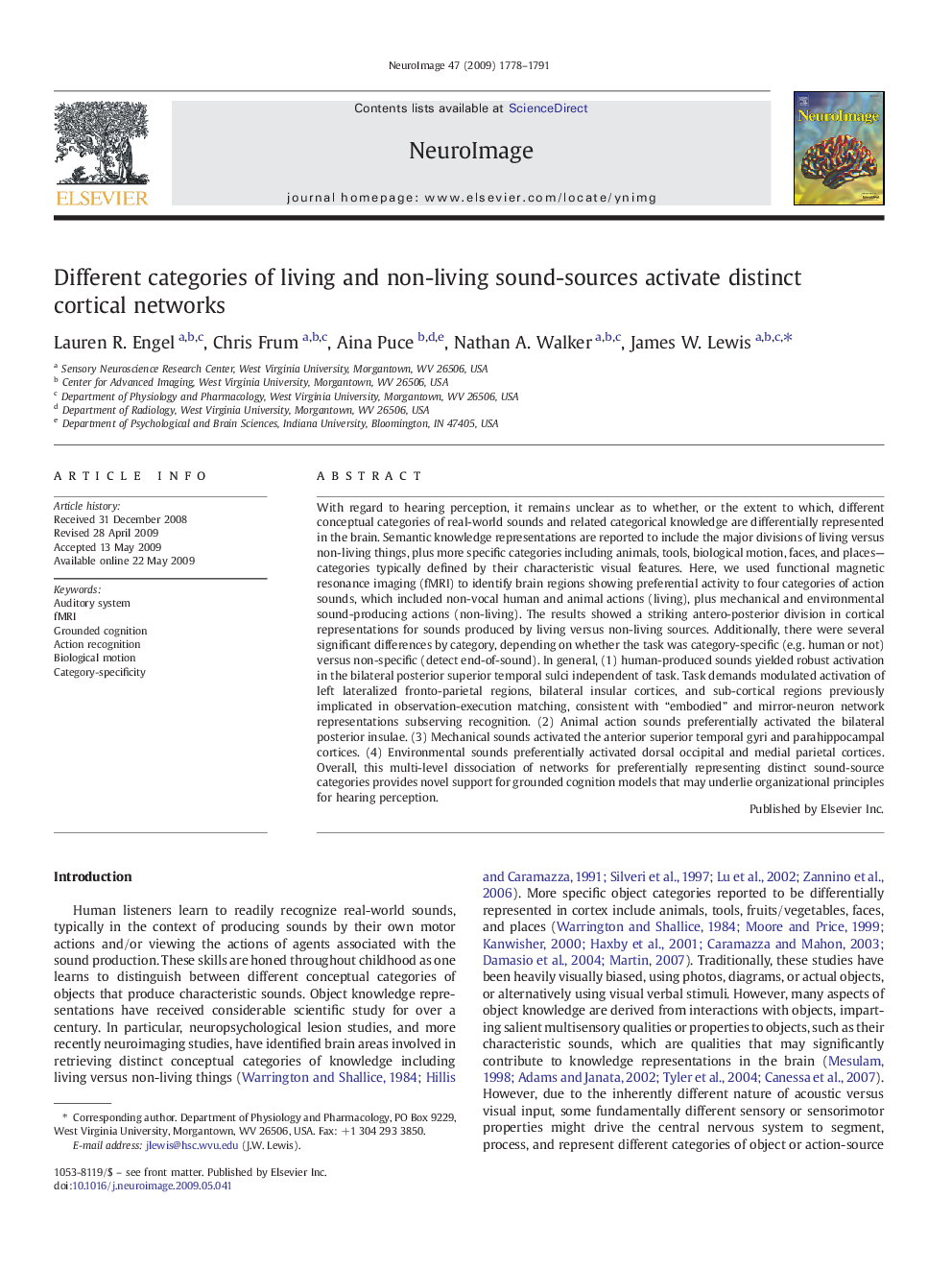| کد مقاله | کد نشریه | سال انتشار | مقاله انگلیسی | نسخه تمام متن |
|---|---|---|---|---|
| 6038604 | 1188803 | 2009 | 14 صفحه PDF | دانلود رایگان |
عنوان انگلیسی مقاله ISI
Different categories of living and non-living sound-sources activate distinct cortical networks
دانلود مقاله + سفارش ترجمه
دانلود مقاله ISI انگلیسی
رایگان برای ایرانیان
کلمات کلیدی
موضوعات مرتبط
علوم زیستی و بیوفناوری
علم عصب شناسی
علوم اعصاب شناختی
پیش نمایش صفحه اول مقاله

چکیده انگلیسی
With regard to hearing perception, it remains unclear as to whether, or the extent to which, different conceptual categories of real-world sounds and related categorical knowledge are differentially represented in the brain. Semantic knowledge representations are reported to include the major divisions of living versus non-living things, plus more specific categories including animals, tools, biological motion, faces, and places-categories typically defined by their characteristic visual features. Here, we used functional magnetic resonance imaging (fMRI) to identify brain regions showing preferential activity to four categories of action sounds, which included non-vocal human and animal actions (living), plus mechanical and environmental sound-producing actions (non-living). The results showed a striking antero-posterior division in cortical representations for sounds produced by living versus non-living sources. Additionally, there were several significant differences by category, depending on whether the task was category-specific (e.g. human or not) versus non-specific (detect end-of-sound). In general, (1) human-produced sounds yielded robust activation in the bilateral posterior superior temporal sulci independent of task. Task demands modulated activation of left lateralized fronto-parietal regions, bilateral insular cortices, and sub-cortical regions previously implicated in observation-execution matching, consistent with “embodied” and mirror-neuron network representations subserving recognition. (2) Animal action sounds preferentially activated the bilateral posterior insulae. (3) Mechanical sounds activated the anterior superior temporal gyri and parahippocampal cortices. (4) Environmental sounds preferentially activated dorsal occipital and medial parietal cortices. Overall, this multi-level dissociation of networks for preferentially representing distinct sound-source categories provides novel support for grounded cognition models that may underlie organizational principles for hearing perception.
ناشر
Database: Elsevier - ScienceDirect (ساینس دایرکت)
Journal: NeuroImage - Volume 47, Issue 4, 1 October 2009, Pages 1778-1791
Journal: NeuroImage - Volume 47, Issue 4, 1 October 2009, Pages 1778-1791
نویسندگان
Lauren R. Engel, Chris Frum, Aina Puce, Nathan A. Walker, James W. Lewis,